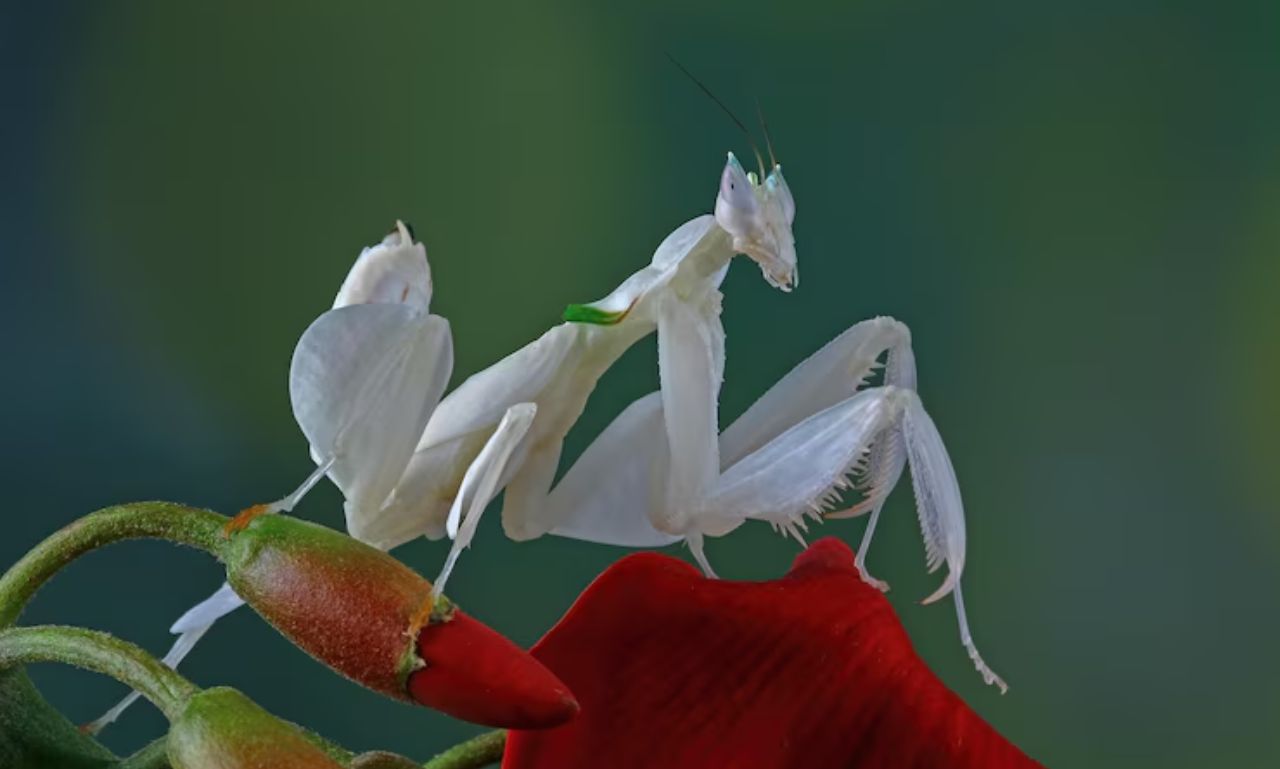Mythology & Spiritual Symbolism
Hades Flower: 7 Mysterious Truths Behind the Dark Bloom of the Underworld

When we hear the term Hades Flower, it immediately evokes mystery, myth, and the macabre. Named after Hades, the Greek god of the underworld, this symbolic bloom isn’t just a figment of mythology but carries deep spiritual and cultural significance. Whether you’ve encountered the name in literature, dream symbolism, or dark floral arrangements, the Hades Flower has become an enigmatic emblem worth exploring.
In this comprehensive blog post, we delve into the origins, symbolic meanings, mythological connections, and spiritual interpretations of the Hades Flower. Additionally, we will explore its presence in art, rituals, dreams, and modern metaphysical practices.
Let’s begin our journey into the shadows.
1. The Origins of the Hades Flower: Myth and Mystery
To understand the Hades Flower, we must first uncover its origin. Contrary to popular belief, the flower isn’t a single botanical species. Instead, it’s a mythologically inspired concept—often represented by dark-colored blooms such as black roses, black dahlias, and even belladonna.
The Greek Mythological Connection
In Greek mythology, Hades ruled the underworld alongside his queen, Persephone. The underworld was often associated with death, transformation, and secrets. Naturally, the Hades Flower is said to grow in this shadowy domain—nourished by the souls of the departed.
According to some interpretations, the Hades Flower was a rare bloom that only appeared where the veil between life and death was thinnest. Thus, it became a powerful symbol of mystery, endings, and rebirth.
Transitioning from Legend to Symbol
As time went on, this myth evolved into symbolic representation in both pagan and modern spiritual circles. Today, flowers tied to Hades’ energy are used in rituals, art, and even fashion to invoke transformation, spiritual depth, and connection to the shadow self.
2. Hades Flower Meaning in Spiritual Symbolism
Spiritually, the more than a mythical plant. It embodies a wide spectrum of meanings—often representing what most people fear but deeply need: transformation through darkness.
Darkness as Fertile Ground
While flowers are usually associated with light and beauty, the Hades Flower thrives in the metaphorical dark. Spiritually, it teaches us that growth doesn’t always happen in the light. In fact, many personal transformations begin in moments of despair, solitude, or pain.
Just as seeds germinate in the soil’s dark depths before breaking into the light, the Hades Flower reminds us that our dark periods can be sacred gestation periods.
Death and Rebirth
Furthermore, the flower is linked to death—not in the literal sense, but symbolic. Endings, breakups, grief, and loss are all forms of spiritual death. The Hades Flower assures us that these endings are often the prelude to something new and profound.
3. Botanical Equivalents: What Flowers Symbolize the Hades Flower?
Since there’s no single flower officially labeled as the “Hades Flower,” many blooms have come to represent its essence. Let’s explore some of these dark and beautiful contenders:
1. Black Rose
The black rose is one of the most common representations of the Ha-des Fl-ower. It signifies farewell, mystery, and rebirth. It’s often used in gothic aesthetics and spiritual rituals associated with letting go.
2. Belladonna (Deadly Nightshade)
With its beautiful yet poisonous berries, belladonna perfectly embodies the balance of allure and danger. Used by witches and poisoners throughout history, this plant aligns with Hades’ darker themes.
3. Black Dahlia
Often seen as a symbol of betrayal and inner strength, the black dahlia fits the profile of the Hades Flower. It’s stunning, rare, and deeply symbolic.
4. Hellebore (Christmas Rose or Lenten Rose)
Though not black in color, hellebores bloom in late winter and early spring—times associated with death and renewal. Often connected to protection and spiritual purification, they resonate with the underworld theme.
4. Hades Flower in Dreams: What Does It Mean?
Dreaming about can carry powerful subconscious messages. Due to its deep symbolism, this flower appearing in your dreamscape suggests your inner self is grappling with transformation, loss, or hidden power.
Common Dream Interpretations:
-
Seeing a Hades Flower in bloom: You are beginning to embrace your shadow self or undergoing a significant transformation.
-
Receiving the flower from someone: Someone in your life is helping you navigate a period of personal change or spiritual awakening.
-
Withering Ha-des Flower: A warning to stop resisting change; clinging to the past is impeding your growth.
-
Planting a Hades Fl-ower: You are consciously choosing to work with dark energy for healing or spiritual development.
In any case, these dreams are rarely negative. Instead, they reflect emotional depth and spiritual readiness.
5. Hades Flower in Rituals and Modern Metaphysics
In modern spiritual practices such as witchcraft, Wicca, and metaphysical healing, the Hades Flower plays an integral role.
Shadow Work
Shadow work is the process of exploring and integrating the parts of ourselves that we often hide—our fears, traumas, and suppressed desires. The Ha-des Flo-wer, symbolic of darkness, is a powerful ally in this process.
During rituals for shadow work, practitioners may place representations of this flower on their altar or use flower essences (where safe and non-toxic) to aid in emotional processing.
Grief and Letting Go
Because it’s associated with endings, the Hades Flower is commonly used in rituals for grief, closure, and letting go. Placing a black rose in running water or burning a petal in a fire ceremony are common symbolic acts.
Protection and Boundaries
Surprisingly, the flower is also seen as a protector. Drawing on the fierce energy of Hades himself, this flower represents strong spiritual boundaries. Those working with spiritual energies or going through psychic development often call on the Flower for energetic protection.
6. Cultural Perspectives on the Hades Flower
While the flower has deep roots in Greek mythology, similar themes appear in other cultures—showing how the idea of a “dark bloom” is universally resonant.
Japanese Culture
In Japan, the red spider lily (Higanbana) is known as the flower of the afterlife. It’s often planted at the edges of cemeteries and represents the soul’s journey between life and death—much like the Hades Flower.
Aztec Mythology
The Aztecs revered marigolds as the flower of the dead, used prominently in Day of the Dead rituals. Although bright in color, their symbolism aligns with the Hades Flower’s connection to the spirit world.
Celtic Traditions
Dark blooms like yew trees and blackthorn flowers were revered in Celtic lore. They represented ancestral connections, death, and the divine feminine—again, themes echoed in the Flower.
7. How to Work with Hades Flower Energy in Daily Life
You don’t need to be a mythologist or practicing witch to draw on the energy of the Hades Flower. Its symbolism is available to anyone seeking inner truth, courage, and emotional transformation.
Meditation and Visualization
Visualize the Hades Flower blooming in the darkest part of a forest or underground cavern. This mental image can serve as a powerful anchor during meditation, especially when dealing with fear, grief, or change.
Affirmations Inspired by the Hades Flower
-
“I honor the wisdom that comes from darkness.”
-
“I bloom even in the shadows.”
-
“My transformation is sacred.”
Home Decor and Fashion
Adorning your space or wardrobe with images or colors inspired by the (black, deep purple, or blood red) can create a mood of mystery, power, and introspection.
Journaling Prompts
-
“What parts of myself have I hidden, and why?”
-
“How have I grown through pain or endings?”
-
“What am I ready to let go of to step into a new chapter?”
Hades Flower in Literature and Pop Culture
Lastly, let’s not forget how the found its way into modern storytelling. It appears in gothic novels, dark fantasy, horror films, and even video games as a recurring motif for seduction, doom, and transformation.
From Hades and Persephone retellings to anime and dark romantic poetry, the Flower often serves as a symbol of beauty blooming in darkness, a reminder that not all things of value are bright and shiny.
Conclusion: Embrace the Shadow, Bloom in Darkness
The Hades Flower invites us to redefine beauty, power, and transformation. Rather than fearing the dark, we’re encouraged to see it as a necessary phase of spiritual growth. Whether used in rituals, dream interpretation, or personal reflection, the energy of this mythical bloom is both powerful and healing.
Ultimately, the Hades Flower reminds us that death is not the end, but a gateway—and that true growth often starts underground, in unseen and sacred places.
So the next time life feels heavy or uncertain, think of the Hades Flower. Bloom anyway. In the dark. On your terms.

-

 Business8 months ago
Business8 months agoCoyyn.com Economy | Insights on Gig & Digital Economies
-

 Reviews8 months ago
Reviews8 months agoDelta Touch Faucet Reviews – (Buying Guide 2025)
-
Reviews8 months ago
Kraus Faucet Reviews – (Buying Guide 2025)
-
Reviews8 months ago
Pfister Faucet Reviews – (Buying Guide 2025)
-

 Reviews8 months ago
Reviews8 months agoGlacier Bay Faucet Reviews
-
Reviews8 months ago
Brizo Kitchen Faucet Reviews – (Buying Guide 2025)
-
Reviews8 months ago
Grohe Faucet Reviews – (Buying Guide 2025)
-
Reviews8 months ago
American Standard Colony Soft Pull-Down Review